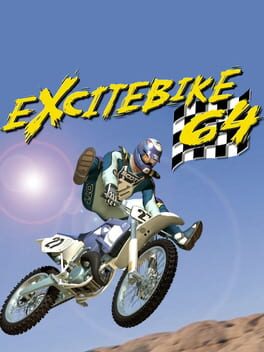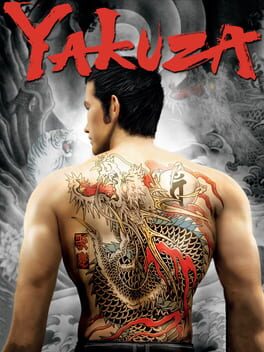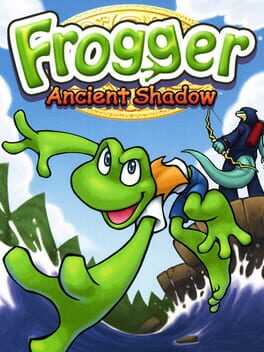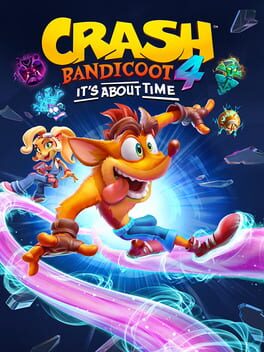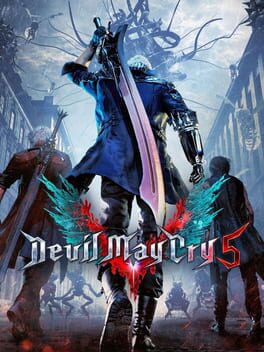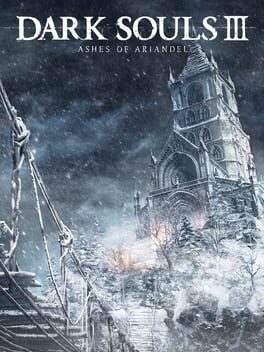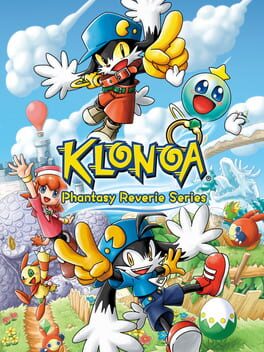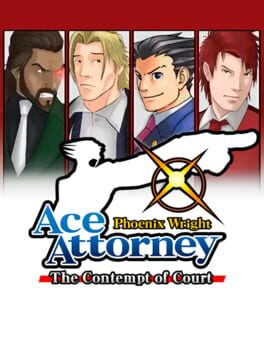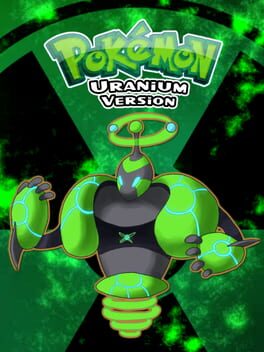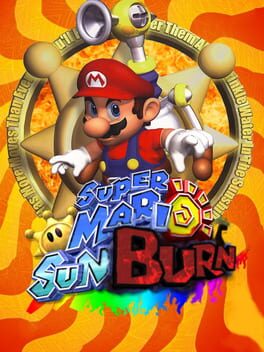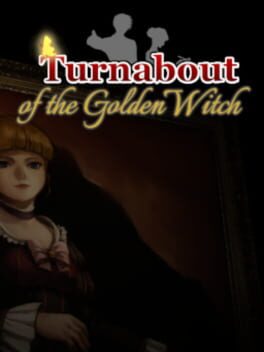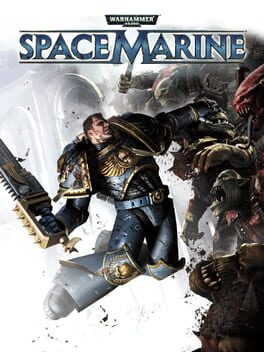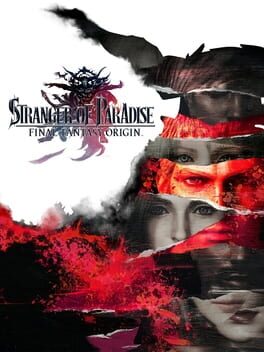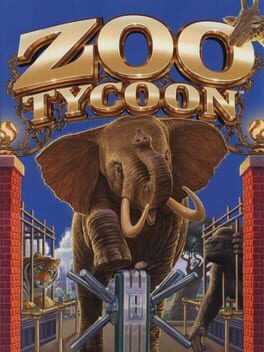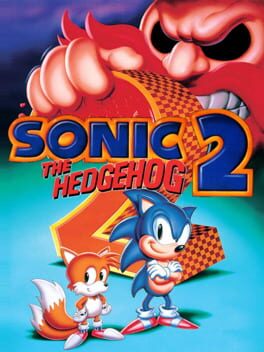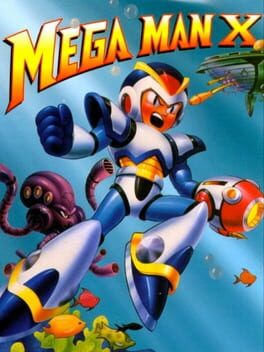JoabeanBeanix
26 reviews liked by JoabeanBeanix
Excitebike 64
2000
Another game stuck in that specific period of time in which some racing games wanted to deviate from the more fun and traditional arcade gameplay, to the more grounded realism type of "how it really felt to actually drive" so they had all these systems ready that accurately represented elements from real races, but whose vehicle controls were just not quite fit for it..
As I initially set off to finish the last of the remaining dungeons, I round a corner and a stray thought occurs: “Can I dogfight dragons in this game?” After an evening spent on that instead, it turns out that I can both do that and send it tumbling down a cliff in the process. Another thought follows: “This is probably the coolest game I’ve ever played.”
This reflects a strength that’s been carried forward from Breath of the Wild and part of what separated that game from standard open world fare: the “triangle rule.” It includes shaping environmental geometry in such a way that landmarks and other notable sights were deliberately obscured from angles players were most likely to view them from, creating a visual chain of interest as they orient themselves around it. It’s impressive that Tears of the Kingdom retains this considering just how much Hyrule has been reshuffled and expanded upon, but where it particularly excels in this regard is in terms of new additions, namely its tripling down on verticality.
Diving into a well or tree stump, winding up in a complex cave system, finding treasure behind a waterfall or at the top of a hidden shaft and using Ascend to pop out the other end in parts unknown is the exact kind of storybook-like experience that this new formula needed, like meat added to the bones of the sense of adventure BOTW was otherwise so successful at selling. Caves seem a deceptively simple inclusion on a conceptual level – goodness knows open world fantasy games’re no stranger to them – but one reason you couldn’t just plop TOTK’s into some other game is because of how their design’s informed by Link’s traversal options. Just finding them often resembles a scene out of Katsuya Terada’s art for the first few Zelda games, steep climbs into hidden entryways and all, often in a way that foreshadows the challenges inside. Slippery walls, boulders you have to smash your way through, confined spaces and other hazards combine to form the other reason, which is the contrast these environmentally constrained puzzle boxes create with the rest of the game’s freedom.
Shrines and temples alike exemplify this, as much as or more than the spectacle of diving from a sky island straight into the Depths in what’s a sensation I haven’t felt since Gravity Rush 2. Getting goofy with a combination of Ultrahand and Recall or whatever other powers you prefer to circumvent obstacles brings to mind an anecdote I have about a level in Thief 2 called Casing the Joint – years now after first playing that level, I still couldn’t tell you the “proper” way to beat it, because I’d always drag boxes from the opposite end of the level and use them to scramble onto titular joint’s roof before smashing a window that would leave every guard permanently alerted. Scuffed a method as it may sound, the important thing is that the game says “yes” to the player regardless, and the same’s largely true of TOTK; although, as with BOTW, some of its quest design shows that it isn’t fully designed in accordance with these sorts of open-ended solutions (Calip’s omniscient fence in Kakariko comes to mind), this isn’t necessarily so much a flaw as just an indicator that it’s not quite the same type of game. Where limitations like these do exist, they rarely feel so arbitrary as to outweigh the feeling of thinking like an adventurer that comes with nonlinear problem solving through Link’s new, more multifaceted powers.
Fuse is a favourite of mine not just for how it turns any item you come across into a potential tool, but also because this by extension encourages thinking about your equipment more than BOTW required. A bokoblin reaper may share the same animations as a horriblin hammer, but only one of them’s getting used for smashing enemies’ armour, clearing boulders out of caverns or searching for ore among other things. It’s understandable why some players may initially be upset at the apparent lack of any new weapon types compared to BOTW, but considering how many different functionalities are covered thanks to this one power, I wouldn’t be surprised if the devs considered and rejected the idea based on potential new ones being redundant. It feels weird to say so about a game that isn’t by any means hurting for recognition, but this is just one example of how it (and its predecessor) probably deserves more credit for achieving more with less.
This extends to its enemy design. We have a tendency to think of “enemy variety” in terms of the quantity of different enemy types, but what gets lost in that sort of discourse is the mechanical variety between those types. Even in BOTW, bokoblins have more dynamic behaviours than the combined enemy rosters of some other games, and that was without boss bokoblins, aerocudas and Zonai constructs for them to interact with. While TOTK having a higher amount of different and region-specific enemy types is appreciated nonetheless, I’m glad that fleshing out these behaviours amongst a relatively condensed roster still seems to have been a priority.
Flux Constructs are a standout in both that respect and why we ought to also apply this sort of lateral thinking to TOTK’s combat as well – in a game in which you can remove a golem’s hands to prevent him from being able to punch you, shoot dragons out of the sky with a DIY plane or suspend yourself in air with a foot-mounted flamethrower, it seems myopic to judge it based on how many ways Link can swing a weapon. Between using Recall on a certain attack of theirs to fling myself to places I couldn’t otherwise reach, darkness that’s actually dark and which requires resources to dispel, plus summonable AI companions, it becomes apparent that the sceptics were wrong – this isn’t BOTW DLC, but rather a Dragon’s Dogma 2 closed beta.
I’m only being slightly facetious, because much of what makes Dragon’s Dogma and its mutual point of influence, i.e. Skyrim, special as adventure games is present here too. If those two games could each be distilled into one key characteristic, I’d say they’re respectively dynamism and player-directed experiences. TOTK takes both and melds them with a largely honoured commitment to unrestricted problem solving that – in my view – has always felt like the most natural direction for Zelda to go in, forming a superlative package which I think sits at the top of its franchise, its console and potentially open world games in general.
All this and somehow I still feel as if I’ve only scratched the surface of all there is to appreciate here. As many words could be written about the atmosphere invoked during a sunset with the Dragon Head Island theme playing, the extent to which Ganondorf’s phase 2 transition has been living in my head rent free or the fact that, if you think about it, Link himself has become the legend of Zelda. I might play another 100 hours and still be finding new things to wrap my head around. Such a game.
This reflects a strength that’s been carried forward from Breath of the Wild and part of what separated that game from standard open world fare: the “triangle rule.” It includes shaping environmental geometry in such a way that landmarks and other notable sights were deliberately obscured from angles players were most likely to view them from, creating a visual chain of interest as they orient themselves around it. It’s impressive that Tears of the Kingdom retains this considering just how much Hyrule has been reshuffled and expanded upon, but where it particularly excels in this regard is in terms of new additions, namely its tripling down on verticality.
Diving into a well or tree stump, winding up in a complex cave system, finding treasure behind a waterfall or at the top of a hidden shaft and using Ascend to pop out the other end in parts unknown is the exact kind of storybook-like experience that this new formula needed, like meat added to the bones of the sense of adventure BOTW was otherwise so successful at selling. Caves seem a deceptively simple inclusion on a conceptual level – goodness knows open world fantasy games’re no stranger to them – but one reason you couldn’t just plop TOTK’s into some other game is because of how their design’s informed by Link’s traversal options. Just finding them often resembles a scene out of Katsuya Terada’s art for the first few Zelda games, steep climbs into hidden entryways and all, often in a way that foreshadows the challenges inside. Slippery walls, boulders you have to smash your way through, confined spaces and other hazards combine to form the other reason, which is the contrast these environmentally constrained puzzle boxes create with the rest of the game’s freedom.
Shrines and temples alike exemplify this, as much as or more than the spectacle of diving from a sky island straight into the Depths in what’s a sensation I haven’t felt since Gravity Rush 2. Getting goofy with a combination of Ultrahand and Recall or whatever other powers you prefer to circumvent obstacles brings to mind an anecdote I have about a level in Thief 2 called Casing the Joint – years now after first playing that level, I still couldn’t tell you the “proper” way to beat it, because I’d always drag boxes from the opposite end of the level and use them to scramble onto titular joint’s roof before smashing a window that would leave every guard permanently alerted. Scuffed a method as it may sound, the important thing is that the game says “yes” to the player regardless, and the same’s largely true of TOTK; although, as with BOTW, some of its quest design shows that it isn’t fully designed in accordance with these sorts of open-ended solutions (Calip’s omniscient fence in Kakariko comes to mind), this isn’t necessarily so much a flaw as just an indicator that it’s not quite the same type of game. Where limitations like these do exist, they rarely feel so arbitrary as to outweigh the feeling of thinking like an adventurer that comes with nonlinear problem solving through Link’s new, more multifaceted powers.
Fuse is a favourite of mine not just for how it turns any item you come across into a potential tool, but also because this by extension encourages thinking about your equipment more than BOTW required. A bokoblin reaper may share the same animations as a horriblin hammer, but only one of them’s getting used for smashing enemies’ armour, clearing boulders out of caverns or searching for ore among other things. It’s understandable why some players may initially be upset at the apparent lack of any new weapon types compared to BOTW, but considering how many different functionalities are covered thanks to this one power, I wouldn’t be surprised if the devs considered and rejected the idea based on potential new ones being redundant. It feels weird to say so about a game that isn’t by any means hurting for recognition, but this is just one example of how it (and its predecessor) probably deserves more credit for achieving more with less.
This extends to its enemy design. We have a tendency to think of “enemy variety” in terms of the quantity of different enemy types, but what gets lost in that sort of discourse is the mechanical variety between those types. Even in BOTW, bokoblins have more dynamic behaviours than the combined enemy rosters of some other games, and that was without boss bokoblins, aerocudas and Zonai constructs for them to interact with. While TOTK having a higher amount of different and region-specific enemy types is appreciated nonetheless, I’m glad that fleshing out these behaviours amongst a relatively condensed roster still seems to have been a priority.
Flux Constructs are a standout in both that respect and why we ought to also apply this sort of lateral thinking to TOTK’s combat as well – in a game in which you can remove a golem’s hands to prevent him from being able to punch you, shoot dragons out of the sky with a DIY plane or suspend yourself in air with a foot-mounted flamethrower, it seems myopic to judge it based on how many ways Link can swing a weapon. Between using Recall on a certain attack of theirs to fling myself to places I couldn’t otherwise reach, darkness that’s actually dark and which requires resources to dispel, plus summonable AI companions, it becomes apparent that the sceptics were wrong – this isn’t BOTW DLC, but rather a Dragon’s Dogma 2 closed beta.
I’m only being slightly facetious, because much of what makes Dragon’s Dogma and its mutual point of influence, i.e. Skyrim, special as adventure games is present here too. If those two games could each be distilled into one key characteristic, I’d say they’re respectively dynamism and player-directed experiences. TOTK takes both and melds them with a largely honoured commitment to unrestricted problem solving that – in my view – has always felt like the most natural direction for Zelda to go in, forming a superlative package which I think sits at the top of its franchise, its console and potentially open world games in general.
All this and somehow I still feel as if I’ve only scratched the surface of all there is to appreciate here. As many words could be written about the atmosphere invoked during a sunset with the Dragon Head Island theme playing, the extent to which Ganondorf’s phase 2 transition has been living in my head rent free or the fact that, if you think about it, Link himself has become the legend of Zelda. I might play another 100 hours and still be finding new things to wrap my head around. Such a game.
perspective shot of the house
peter is sitting on the couch, typing on his laptop
Brian: "Hey Peter what are you doing"
Peter: "Oh hey Bri, I'm reviewing our video game on this neat website, it's so freakin' awesome"
Brian: "Sure, but don't you think writing about your own work would come off as a bit narcissistic"
Peter: "No way, internet celebrities do this all the time. Just like my distant cousin and soulslike v-tuber, Ashley Griffin"
cutaway to Ashley Griffin
Ashley Griffin: "Rap isn't real music"
perspective shot of the house
peter is again typing on his laptop, but is now laying stomach-down on the couch and swinging his legs back and forth while twirling his hair through his finger
stewie walks in
Stewie, chuckling: "Well well well, somebody must be making breakfast 'cause I see an egg cracking!"
long pause
the camera gets a close-up of Stewie
Stewie, looking at the camera with a straight face: "That was a gay joke."
another long pause
the doorbell rings
Peter, yelling towards kitchen: "Hey Meg, make yourself useful and get the door"
Meg: audibly makes this noise
Peter: "Shut up, Meg"
meg falls over and remains there for the duration of the scene
lois answers the front door
Lois: "Well, you must be Cyndi Lauper!"
Cyndi Lauper: "Hello, Lois. It is I, Cyndi Lauper, from 'that one music video your parents won't stop streaming to the tv while guests are over' "
peter walks on-screen
Peter: "What's goin' on""
Cyndi Lauper, hands on hips: "Peter, I'm here as a representative of the Lotta Paragraph Games Committee, and we've been receiving some very unhappy messages about your so-called 'review'. Many of our group chat members say it's in poor taste"
Peter: .
Lois, laughing nervously: "Ohhh, I'm sure it can't be that bad,"
Lois, now with a straight face: "Trust me, I know Peter and poor taste"
cutaway to peter sitting in a high chair wearing a bib. Lois is angrily feeding him peas on a spoon
Peter, crying: "I don't wanna! it doesn't even have any Styrofoam marshmallows shaped like my morning cartoons!"
Lois, fuming: "You'll eat it and like it!"
cut back to scene
Cyndi Lauper: "Now, it's perfectly reasonable to be defensive about it, but that's the group consensus going around"
Cyndi Lauper, whispering to Peter: "I even hear them calling it pick-me behavior"
Peter, gasping: "What??? Pick-me behavior??? That's ridiculous! I haven't done anything of the sort! Well, not since high school, anyway"
cut to joe, cleveland, peter and quagmire, in high school, sitting at, each holding a glass of milk
Joe: "My glass is half-full"
Cleveland: "My glass is half-empty"
Peter, doing pensive emoji face: "My glass feels like everyone treats them like a ghost and wishes they would invite them to parties and give them free affection but it's ok it's not really bothered by it it's just venting :("
Quagmire: "My glass is still warm! Giggity giggity giggity giggity!!!"
cut back to scene
Cyndi Lauper: "Well I'm sorry, but if you want to give a better impression to those people, you'll have to put up a new review expressing how you really feel"
shot of the clam
peter, joe, and quagmire are sitting at their booth
Peter, looking at the camera, unimpressed: "Cleveland isn't here with us today so I'm going to say something racially insensitive. Seth will not comment about this for the next 20 years, then reply to a callout tweet about it with the 'clenched teeth oooooh' reaction gif"
Quagmire, looking at Peter: "So Peter, you're saying these guys are upset at your review"
Peter: "Yeah, they say it's not a real review and it's just me bragging about me having my own game"
Joe: "Well Beter, if I were you, I'd update it to include a lengthy manifesto about the idiosyncrasies between our show's cutaway format and the sequential structure of game
Quagmire: "Or you could be like me and name all the characters you wanna bang!"
Peter, excited: "Hey, that's a great idea!"
Joe: "Which idea, the uhh, my idea or the other one"
Peter, now straight-faced: "The other one"
Joe, looking downwards: .
sweeping shot of guadelahara
cut to stewie and brian eating granola and sitting on a rock
Stewie, chewing: "This is the B-plot where we try to make you forget we don't have any other gags about gamer culture"
Brian, also chewing: "I read yaoi during the cutaways"
Two more plot-threads occur over the next 15 minutes, entirely unrelated to the first.
peter is sitting on the couch, typing on his laptop
Brian: "Hey Peter what are you doing"
Peter: "Oh hey Bri, I'm reviewing our video game on this neat website, it's so freakin' awesome"
Brian: "Sure, but don't you think writing about your own work would come off as a bit narcissistic"
Peter: "No way, internet celebrities do this all the time. Just like my distant cousin and soulslike v-tuber, Ashley Griffin"
cutaway to Ashley Griffin
Ashley Griffin: "Rap isn't real music"
perspective shot of the house
peter is again typing on his laptop, but is now laying stomach-down on the couch and swinging his legs back and forth while twirling his hair through his finger
stewie walks in
Stewie, chuckling: "Well well well, somebody must be making breakfast 'cause I see an egg cracking!"
long pause
the camera gets a close-up of Stewie
Stewie, looking at the camera with a straight face: "That was a gay joke."
another long pause
the doorbell rings
Peter, yelling towards kitchen: "Hey Meg, make yourself useful and get the door"
Meg: audibly makes this noise
Peter: "Shut up, Meg"
meg falls over and remains there for the duration of the scene
lois answers the front door
Lois: "Well, you must be Cyndi Lauper!"
Cyndi Lauper: "Hello, Lois. It is I, Cyndi Lauper, from 'that one music video your parents won't stop streaming to the tv while guests are over' "
peter walks on-screen
Peter: "What's goin' on""
Cyndi Lauper, hands on hips: "Peter, I'm here as a representative of the Lotta Paragraph Games Committee, and we've been receiving some very unhappy messages about your so-called 'review'. Many of our group chat members say it's in poor taste"
Peter: .
Lois, laughing nervously: "Ohhh, I'm sure it can't be that bad,"
Lois, now with a straight face: "Trust me, I know Peter and poor taste"
cutaway to peter sitting in a high chair wearing a bib. Lois is angrily feeding him peas on a spoon
Peter, crying: "I don't wanna! it doesn't even have any Styrofoam marshmallows shaped like my morning cartoons!"
Lois, fuming: "You'll eat it and like it!"
cut back to scene
Cyndi Lauper: "Now, it's perfectly reasonable to be defensive about it, but that's the group consensus going around"
Cyndi Lauper, whispering to Peter: "I even hear them calling it pick-me behavior"
Peter, gasping: "What??? Pick-me behavior??? That's ridiculous! I haven't done anything of the sort! Well, not since high school, anyway"
cut to joe, cleveland, peter and quagmire, in high school, sitting at, each holding a glass of milk
Joe: "My glass is half-full"
Cleveland: "My glass is half-empty"
Peter, doing pensive emoji face: "My glass feels like everyone treats them like a ghost and wishes they would invite them to parties and give them free affection but it's ok it's not really bothered by it it's just venting :("
Quagmire: "My glass is still warm! Giggity giggity giggity giggity!!!"
cut back to scene
Cyndi Lauper: "Well I'm sorry, but if you want to give a better impression to those people, you'll have to put up a new review expressing how you really feel"
shot of the clam
peter, joe, and quagmire are sitting at their booth
Peter, looking at the camera, unimpressed: "Cleveland isn't here with us today so I'm going to say something racially insensitive. Seth will not comment about this for the next 20 years, then reply to a callout tweet about it with the 'clenched teeth oooooh' reaction gif"
Quagmire, looking at Peter: "So Peter, you're saying these guys are upset at your review"
Peter: "Yeah, they say it's not a real review and it's just me bragging about me having my own game"
Joe: "Well Beter, if I were you, I'd update it to include a lengthy manifesto about the idiosyncrasies between our show's cutaway format and the sequential structure of game
Quagmire: "Or you could be like me and name all the characters you wanna bang!"
Peter, excited: "Hey, that's a great idea!"
Joe: "Which idea, the uhh, my idea or the other one"
Peter, now straight-faced: "The other one"
Joe, looking downwards: .
sweeping shot of guadelahara
cut to stewie and brian eating granola and sitting on a rock
Stewie, chewing: "This is the B-plot where we try to make you forget we don't have any other gags about gamer culture"
Brian, also chewing: "I read yaoi during the cutaways"
Two more plot-threads occur over the next 15 minutes, entirely unrelated to the first.
Yakuza
2005
TO LIVE IS TO NOT RUN AWAY
After I finished Like A Dragon, I got a sort of motivation to go through the rest of the Yakuza series. I decided to go with the release order, since that would give me the clearest perspective of the progression of the series, and it's a viewpoint I feel that I rarely ever see with Yakuza. This does mean that I'll have a hiatus my playthroughs for a while, since I don't have the remasters of 3-5. Even so, I'm interested in tackling this series I've heard so much about, and this one made a pretty strong impression.
The way I see it, Yakuza is the DMC1 of the franchise. It clearly shows a very early foundation of the franchise, but still feels like it has a unique flair from the games that followed it. Despite this, it doesn't look like this game gets nearly as much respect as that one does. I feel like this is because of Kiwami and how it ties things closer to 0, leading to most people saying "just play Kiwami". (I've had multiple people say that to me.) While I do have a bit of an urge to get on my soapbox and talk about how I despise this mentality, it's something that can wait for another time. For now, I just want to talk about my general thoughts on the game.
The biggest thing I want to start off with is its aesthetics. Kamurocho looks absolutely amazing in this game. The brightly-lit city is especially beautiful at nighttime. It's one of the most gorgeous environments I've seen on the PS2. This is the only game in the series(to my knowledge) that sticks with fixed camera angles, and they're used to great effect in making every area feel distinct. The atmosphere it creates with the bustling city noises and the occasional low-key music especially stands out. I haven't gotten quite this feeling from Like A Dragon and the bits of 0 that I've played, I can't stress enough how much this adds to the experience.
The gameplay is some fairly simple beat-em-up style combat, but I think it has a few elements that make it fairly interesting. The one that stood out to me the most was the heat gauge, where keeping up consistently good performance in battle rewarded you with passive buffs and the ability to do satisfying heat moves. I really like this system, it's sort of like DMC's style meter in terms of how it encourages keeping up momentum in combat, though to a similar effect. It's hardly a perfect combat system, though. My big issue is with how Kiryu can't turn at all when he's in the middle of a combo. Turning around in general when enemies are on you is a bit of a hassle. I'd complain about some other experiences, but I'm going to be more lenient since they probably had something to do with PCSX2's awful input delay. Despite that, I felt that successful combat encounters were really satisfying.
Combat is at its best with bosses, 1-on-1 encounters especially. They usually do a really good job at testing your abilities without being irritating with how much they bombard you with things to get past. My favorite boss in the game was easily Majima, his swift movement made it a very careful game of bait-and-punish approaches that constantly had me watching his next move. I hope to fight him more often in games moving forward, I think he'd be super fun with later gameplay tweaks.
The last thing I want to go over is the game's story. I bet I hardly have the most in-depth reading out there, but I found the throughline of people trying to run away from their pasts or relationships, or learning to move forward to be engaging in how it was portrayed through the different characters. Nishiki was the most stand-out portrayal of this, but I also saw a bit of that in the character of Detective Date, and how he was a deadbeat for most of his daughter's life. It has a strong message of facing your problems head on and forging your own destiny. This is the resolution that Kiryu is led to by the end of the game, after the suffering he constantly went through throughout the latter half of the game.
Oh yeah, I haven't really talked about Kiryu that much. I was a bit worried that he'd just stick with me as a usual stoic protagonist, but I think by the time his relationships with Haruka and Nishiki were developed, he became incredibly compelling to follow. I especially like how he ties into the core theme I described earlier. He feels he won't be able to live down the stigma from the killing that sent him to prison for 10 years, he lost many people close to him over the course of the game, but he still finds a resolve to keep moving forward. I find that kind of inspiring in a way.
I'm really glad I decided to play this one to the end first out of all the beat-em-up entries. It gave me a clear perspective on the roots of the series, provided me with something fairly special, and got me excited to pursue the franchise going forward. Finishing this series is for sure going to be one of my goals for 2022.
EDIT NOTE: I didn't have a point to say this but I'd mainly recommend playing through this if you have a strong tolerance for bad english dubs. It's far from the worst I've heard, but there's many moments of bad line delivery where I can see someone being completely taken out of the experience thanks to them.
After I finished Like A Dragon, I got a sort of motivation to go through the rest of the Yakuza series. I decided to go with the release order, since that would give me the clearest perspective of the progression of the series, and it's a viewpoint I feel that I rarely ever see with Yakuza. This does mean that I'll have a hiatus my playthroughs for a while, since I don't have the remasters of 3-5. Even so, I'm interested in tackling this series I've heard so much about, and this one made a pretty strong impression.
The way I see it, Yakuza is the DMC1 of the franchise. It clearly shows a very early foundation of the franchise, but still feels like it has a unique flair from the games that followed it. Despite this, it doesn't look like this game gets nearly as much respect as that one does. I feel like this is because of Kiwami and how it ties things closer to 0, leading to most people saying "just play Kiwami". (I've had multiple people say that to me.) While I do have a bit of an urge to get on my soapbox and talk about how I despise this mentality, it's something that can wait for another time. For now, I just want to talk about my general thoughts on the game.
The biggest thing I want to start off with is its aesthetics. Kamurocho looks absolutely amazing in this game. The brightly-lit city is especially beautiful at nighttime. It's one of the most gorgeous environments I've seen on the PS2. This is the only game in the series(to my knowledge) that sticks with fixed camera angles, and they're used to great effect in making every area feel distinct. The atmosphere it creates with the bustling city noises and the occasional low-key music especially stands out. I haven't gotten quite this feeling from Like A Dragon and the bits of 0 that I've played, I can't stress enough how much this adds to the experience.
The gameplay is some fairly simple beat-em-up style combat, but I think it has a few elements that make it fairly interesting. The one that stood out to me the most was the heat gauge, where keeping up consistently good performance in battle rewarded you with passive buffs and the ability to do satisfying heat moves. I really like this system, it's sort of like DMC's style meter in terms of how it encourages keeping up momentum in combat, though to a similar effect. It's hardly a perfect combat system, though. My big issue is with how Kiryu can't turn at all when he's in the middle of a combo. Turning around in general when enemies are on you is a bit of a hassle. I'd complain about some other experiences, but I'm going to be more lenient since they probably had something to do with PCSX2's awful input delay. Despite that, I felt that successful combat encounters were really satisfying.
Combat is at its best with bosses, 1-on-1 encounters especially. They usually do a really good job at testing your abilities without being irritating with how much they bombard you with things to get past. My favorite boss in the game was easily Majima, his swift movement made it a very careful game of bait-and-punish approaches that constantly had me watching his next move. I hope to fight him more often in games moving forward, I think he'd be super fun with later gameplay tweaks.
The last thing I want to go over is the game's story. I bet I hardly have the most in-depth reading out there, but I found the throughline of people trying to run away from their pasts or relationships, or learning to move forward to be engaging in how it was portrayed through the different characters. Nishiki was the most stand-out portrayal of this, but I also saw a bit of that in the character of Detective Date, and how he was a deadbeat for most of his daughter's life. It has a strong message of facing your problems head on and forging your own destiny. This is the resolution that Kiryu is led to by the end of the game, after the suffering he constantly went through throughout the latter half of the game.
Oh yeah, I haven't really talked about Kiryu that much. I was a bit worried that he'd just stick with me as a usual stoic protagonist, but I think by the time his relationships with Haruka and Nishiki were developed, he became incredibly compelling to follow. I especially like how he ties into the core theme I described earlier. He feels he won't be able to live down the stigma from the killing that sent him to prison for 10 years, he lost many people close to him over the course of the game, but he still finds a resolve to keep moving forward. I find that kind of inspiring in a way.
I'm really glad I decided to play this one to the end first out of all the beat-em-up entries. It gave me a clear perspective on the roots of the series, provided me with something fairly special, and got me excited to pursue the franchise going forward. Finishing this series is for sure going to be one of my goals for 2022.
EDIT NOTE: I didn't have a point to say this but I'd mainly recommend playing through this if you have a strong tolerance for bad english dubs. It's far from the worst I've heard, but there's many moments of bad line delivery where I can see someone being completely taken out of the experience thanks to them.
Yakuza
2005
The long drag of a cigarette beneath the city's smog, the urban firmament of glitzy neon signs illuminating a starless sky. Passersby are flagged down by salesmen trying to drag the drunk and the impressionable into hostess clubs, thugs crowd around shady alleyways and dingy dives, an evil eye aimed at any fool too brazen to wander too close. The city is an ecosystem all its own, a interconnected web of the unscrupulous and the downtrodden ensuring an uneasy system of checks and balances. Stand still and you will surely hear its heart beat.
The crowd gathers, and for a brief moment, the underworld deigns to show its belly to the world above. The sound of flesh meeting pavement, of skulls fracturing and limbs breaking, of glass shattering, bullets firing, the wails of a guitar, dirty and unrefined, as overconfident goons and gangsters punch above their weight class attempting to face the dragon as he tosses them aside like litter.
Yakuza is a filthy game, rough and weathered, a stark contrast to the polish of its successors in both sight and sound. It's a raw, intensely atmospheric game full of grungy guitars and rough characters, a game that seems to truly capture the feel of the streets: Quick. Dirty. Brutal, above all else. Without the bombast of microwaving someone's skull or over-the-top action movie antics, we're left with bottles stabbed into eyes, knives jabbed into guts, curb-stomps upon skulls and the desperate wailing of fists, a much more grounded attempt to capture the swift brutality of dirty street brawls.
Yakuza is a tale of blood money, of corruption, ruthlessness and the lingua franca of the fist. A story about the dangers of ambition, the follies of old men and their pride, the glitz and glamor of the criminal underworld, and the fate such a life seals for those who partake in it. The city of Kamurocho is a city that operates on the most primal of rules: Survival of the fittest. It's a city who's history is written in the blood of ruthless and told by those left standing at the end of it all. It's a hotspot for the hedonistic, and the eventual grave of those who've intertwined their fates with the enticing allure of the criminal lifestyle. It's a city with a bloodied history of urban warfare and shady backdoor politics it's waiting to tell.
Will you listen?
The crowd gathers, and for a brief moment, the underworld deigns to show its belly to the world above. The sound of flesh meeting pavement, of skulls fracturing and limbs breaking, of glass shattering, bullets firing, the wails of a guitar, dirty and unrefined, as overconfident goons and gangsters punch above their weight class attempting to face the dragon as he tosses them aside like litter.
Yakuza is a filthy game, rough and weathered, a stark contrast to the polish of its successors in both sight and sound. It's a raw, intensely atmospheric game full of grungy guitars and rough characters, a game that seems to truly capture the feel of the streets: Quick. Dirty. Brutal, above all else. Without the bombast of microwaving someone's skull or over-the-top action movie antics, we're left with bottles stabbed into eyes, knives jabbed into guts, curb-stomps upon skulls and the desperate wailing of fists, a much more grounded attempt to capture the swift brutality of dirty street brawls.
Yakuza is a tale of blood money, of corruption, ruthlessness and the lingua franca of the fist. A story about the dangers of ambition, the follies of old men and their pride, the glitz and glamor of the criminal underworld, and the fate such a life seals for those who partake in it. The city of Kamurocho is a city that operates on the most primal of rules: Survival of the fittest. It's a city who's history is written in the blood of ruthless and told by those left standing at the end of it all. It's a hotspot for the hedonistic, and the eventual grave of those who've intertwined their fates with the enticing allure of the criminal lifestyle. It's a city with a bloodied history of urban warfare and shady backdoor politics it's waiting to tell.
Will you listen?
Imagine you're at a buffet and then you eat what you want and you have a really great time and then someone walks in saying that they're gonna eat every single thing thats available there and then they have a terrible time at it because obviously not everything was meant for them on the buffet and then they say that the entire restaurant and their buffet system was poorly designed because of it and then they leave disappointed, wyd?
Devil May Cry 5
2019
How to surpass 11 years’ worth of expectations in one fell swoop. Newcomers to this series are doubtlessly fortunate to not have to go through several of Erikson’s life stages before they can try DMC5 now, but I think it’ll always be harder to appreciate what an achievement this game is if you weren’t subject to the gargantuan wait for it. For this to exist at all is one thing, but to have ended up being the peak of not just its franchise but arguably its genre in so many ways after all that time is something else entirely.
All four of the main characters are drowning in so many unique mechanics that no amount of text really does them justice, but don’t mistake that for bloat or a lack of focus, because it’s anything but. Nero’s new caveman-like attacks and exploding Devil Breakers hones in on his reckless punky attitude and fleshes out his combat options in a way that finally makes him feel like a worthy heir to his uncle, while also helping him step out of his shadow – talk about ludowudo-whatever harmony. Vergil’s revamped Concentration meter, plethora of just frames and seamless weaving in and out of Sin Devil Trigger at no cost if you time it right feels like the fullest realisation yet of the devilishly precise fighting style that originally made him so popular. V’s characterisation as a squishy wizard differentiates him from other action games that have you fiddling about with multiple characters at once. Dante is Dante, no explanation required, but I will say that I hope Quadruple S does for modern action games what instant weapon switching did for them 20 odd years ago – you can’t help but wonder why every game with a ranking system doesn’t actively integrate it into the gameplay itself like this.
All these options wouldn’t mean much if the game around them wasn’t engaging, so it helps that the level design of DMC5 is staggeringly less obnoxious than all of its predecessors. One level might have you in a giant lift that collapses if you don’t kill the enemies on it quickly enough, revealing an alternate path through the level if it falls as opposed to making you start the challenge from scratch. Another presents you with some brief platforming challenges and doors that are about to shut on either end of them, encouraging you to make a quick decision about which way to go but not punishing you too harshly if you decide to take the path of least resistance. One even has a series of optional, demonic skating parks you can make your way through in multiple ways thanks to Nero’s obscene aerial mobility. The interconnected structure of the previous games’ levels has been shed, and yet, the levels have more ways to progress through them than ever; even the obligatory pick-up-this-item-and-put-it-here “puzzles” feel less egregious now that you can usually tackle them in different orders. A superb trade off for the dice boards and rotating towers of this world, to be sure; it's unfortunate that what's so clearly a series best in this regard is commonly written off for no reason other than that some of the levels look vaguely similar if you squint a bit.
This is true of the enemy design, too. Front to back, DMC5 has the most consistently non-annoying enemy roster in the franchise. No clipping through walls, no long periods of invulnerability that can’t be exploited, just every property of the combat system being stretched to the fullest in ways that feel 100% natural. My favourites are the two that get superarmour or teleport away if you launch them, and picking what moves to use against them becomes even more of a brain teaser when they’re accompanied by other types, who are varyingly more susceptible to being stunned or the hidden fear status effect or clashing with their sword or guard breaks or staying in the air or any number of other under-the-hood tools you have to experiment with. Between the campaign, Bloody Palace and remixed enemy placements on higher difficulties, I don’t think there’s any two enemies that aren’t fought together at some point. Not a single ounce of potential is wasted. The most capital G of gamers might feel that enemies could stand to be more aggressive or have more anti-air options to bring your fancy jump cancels to an end, but I don’t care who you are, because you have absolutely been killed by a stray Riot or Judecca at least once.
Similar credit goes to the bosses, among whom there are miraculously no misfires. Gilgamesh might seem to be on the weaker end until you remember that this is the same series in which Arkham, the Saviour, Nightmare 3 and all of DMC2 exist, after which you suddenly realise he’s either inoffensive at worst or actually quite cool. My favourite is Cavaliere, in part because the first and last of these sword clashes sent my dopamine centre soaring to new heights and it’s all downhill for me from here.
He or any other boss in DMC5 would be a standout if you drag and dropped them into most other action games, and the only reason they’re arguably not in DMC5 itself is because they in turn exist alongside Vergil. I used to prefer his DMC3 iteration – he didn’t define an entire archetype of boss fights for no reason – but as I’ve played this more and more, I realise there’s really no comparison between the two unless you put a lot of stock in presentation. There are more ways to attack, defend yourself from, clash or just generally interact with DMC5’s Vergil than in every previous appearance of his combined, down to him responding to your taunts or commenting on your performance. This isn’t to suggest that more is always better, but the key strength of Vergil has always been that he felt almost like fighting another player, and all these layers upon layers of extra mechanics go huge lengths towards simulating that.
The best games tend to be more than the sum of their parts, so it helps that every other aspect of DMC5 is about as strong as how it plays. The art direction is HUGELY undersold, juggling the weird bio-Gothic architecture of the Qliphoth with the most overtly horror enemies since DMC1 and westernised photorealism, marrying it all into a single oddly cohesive package. Bingo Morihashi ᴵ'ᵐ ˢᵒʳʳʸ ᴵ ᵈᶦˢᵖᵃʳᵃᵍᵉᵈ ʸᵒᵘʳ ʷᵒʳᵏ ᶦⁿ ᵃ ʸᵒᵘᵗᵘᵇᵉ ᶜᵒᵐᵐᵉⁿᵗ ˡᶦᵏᵉ ᵗʰʳᵉᵉ ʸᵉᵃʳˢ ᵃᵍᵒ reconciles the series’ trademark themes of family with a metanarrative about leaving red man vs. blue man behind us in ways that cement Nero as just as legendary as either of them. You already know what the soundtrack’s like, but you probably never noticed how underrated Unwavering Bravery is, so listen to that.
As per Dragon’s Dogma 2’s recent announcement, we’re at most a few years away from video games becoming a solved medium, but DMC5 should by no means be seen as just a pit stop on the way there. You can tell Itsuno threatened to quit if Capcom’s higher ups didn’t let him carry out this game exactly the way he wanted, because every last iota of it oozes passion both for the series itself and everyone who's ever worked on it. Dante has a taunt sourced from a Kamiya tweet, and if that isn’t love, what is?
“DMC is back,” and it’s such a satisfying outing that I don’t mind if it never is again.
All four of the main characters are drowning in so many unique mechanics that no amount of text really does them justice, but don’t mistake that for bloat or a lack of focus, because it’s anything but. Nero’s new caveman-like attacks and exploding Devil Breakers hones in on his reckless punky attitude and fleshes out his combat options in a way that finally makes him feel like a worthy heir to his uncle, while also helping him step out of his shadow – talk about ludowudo-whatever harmony. Vergil’s revamped Concentration meter, plethora of just frames and seamless weaving in and out of Sin Devil Trigger at no cost if you time it right feels like the fullest realisation yet of the devilishly precise fighting style that originally made him so popular. V’s characterisation as a squishy wizard differentiates him from other action games that have you fiddling about with multiple characters at once. Dante is Dante, no explanation required, but I will say that I hope Quadruple S does for modern action games what instant weapon switching did for them 20 odd years ago – you can’t help but wonder why every game with a ranking system doesn’t actively integrate it into the gameplay itself like this.
All these options wouldn’t mean much if the game around them wasn’t engaging, so it helps that the level design of DMC5 is staggeringly less obnoxious than all of its predecessors. One level might have you in a giant lift that collapses if you don’t kill the enemies on it quickly enough, revealing an alternate path through the level if it falls as opposed to making you start the challenge from scratch. Another presents you with some brief platforming challenges and doors that are about to shut on either end of them, encouraging you to make a quick decision about which way to go but not punishing you too harshly if you decide to take the path of least resistance. One even has a series of optional, demonic skating parks you can make your way through in multiple ways thanks to Nero’s obscene aerial mobility. The interconnected structure of the previous games’ levels has been shed, and yet, the levels have more ways to progress through them than ever; even the obligatory pick-up-this-item-and-put-it-here “puzzles” feel less egregious now that you can usually tackle them in different orders. A superb trade off for the dice boards and rotating towers of this world, to be sure; it's unfortunate that what's so clearly a series best in this regard is commonly written off for no reason other than that some of the levels look vaguely similar if you squint a bit.
This is true of the enemy design, too. Front to back, DMC5 has the most consistently non-annoying enemy roster in the franchise. No clipping through walls, no long periods of invulnerability that can’t be exploited, just every property of the combat system being stretched to the fullest in ways that feel 100% natural. My favourites are the two that get superarmour or teleport away if you launch them, and picking what moves to use against them becomes even more of a brain teaser when they’re accompanied by other types, who are varyingly more susceptible to being stunned or the hidden fear status effect or clashing with their sword or guard breaks or staying in the air or any number of other under-the-hood tools you have to experiment with. Between the campaign, Bloody Palace and remixed enemy placements on higher difficulties, I don’t think there’s any two enemies that aren’t fought together at some point. Not a single ounce of potential is wasted. The most capital G of gamers might feel that enemies could stand to be more aggressive or have more anti-air options to bring your fancy jump cancels to an end, but I don’t care who you are, because you have absolutely been killed by a stray Riot or Judecca at least once.
Similar credit goes to the bosses, among whom there are miraculously no misfires. Gilgamesh might seem to be on the weaker end until you remember that this is the same series in which Arkham, the Saviour, Nightmare 3 and all of DMC2 exist, after which you suddenly realise he’s either inoffensive at worst or actually quite cool. My favourite is Cavaliere, in part because the first and last of these sword clashes sent my dopamine centre soaring to new heights and it’s all downhill for me from here.
He or any other boss in DMC5 would be a standout if you drag and dropped them into most other action games, and the only reason they’re arguably not in DMC5 itself is because they in turn exist alongside Vergil. I used to prefer his DMC3 iteration – he didn’t define an entire archetype of boss fights for no reason – but as I’ve played this more and more, I realise there’s really no comparison between the two unless you put a lot of stock in presentation. There are more ways to attack, defend yourself from, clash or just generally interact with DMC5’s Vergil than in every previous appearance of his combined, down to him responding to your taunts or commenting on your performance. This isn’t to suggest that more is always better, but the key strength of Vergil has always been that he felt almost like fighting another player, and all these layers upon layers of extra mechanics go huge lengths towards simulating that.
The best games tend to be more than the sum of their parts, so it helps that every other aspect of DMC5 is about as strong as how it plays. The art direction is HUGELY undersold, juggling the weird bio-Gothic architecture of the Qliphoth with the most overtly horror enemies since DMC1 and westernised photorealism, marrying it all into a single oddly cohesive package. Bingo Morihashi ᴵ'ᵐ ˢᵒʳʳʸ ᴵ ᵈᶦˢᵖᵃʳᵃᵍᵉᵈ ʸᵒᵘʳ ʷᵒʳᵏ ᶦⁿ ᵃ ʸᵒᵘᵗᵘᵇᵉ ᶜᵒᵐᵐᵉⁿᵗ ˡᶦᵏᵉ ᵗʰʳᵉᵉ ʸᵉᵃʳˢ ᵃᵍᵒ reconciles the series’ trademark themes of family with a metanarrative about leaving red man vs. blue man behind us in ways that cement Nero as just as legendary as either of them. You already know what the soundtrack’s like, but you probably never noticed how underrated Unwavering Bravery is, so listen to that.
As per Dragon’s Dogma 2’s recent announcement, we’re at most a few years away from video games becoming a solved medium, but DMC5 should by no means be seen as just a pit stop on the way there. You can tell Itsuno threatened to quit if Capcom’s higher ups didn’t let him carry out this game exactly the way he wanted, because every last iota of it oozes passion both for the series itself and everyone who's ever worked on it. Dante has a taunt sourced from a Kamiya tweet, and if that isn’t love, what is?
“DMC is back,” and it’s such a satisfying outing that I don’t mind if it never is again.
The other day I was watching Turning Red with a friend (it was alright) and I still can’t stop thinking about that scene early on where Mei Ling keeps fantasazing the weirdest fucking scenarios with the guy from the convenience store, because I felt like I was being called out to how I felt after developing a hyper obsession with Sir Vilhelm.
I know he’s nothing more than a supporting character bordering on unnecessary by the story and I'm aware that you can’t even see his face… but like when you are 17 and mad confused about your sexuality and a morally questionable guy speaks with that goddamn howling voice of someone who’s been smoking cigarettes and drinking whiskey since birth, things just hit differently okay.
This is probably I'm sharing this online but I even made a mashup with his voice lines and a song that I liked from Pyre, here’s my cringe if you wanna give it a listen, and yes that’s the original name:
https://www.mediafire.com/file/tk28iboxsxuk8lo/MY_MASTERPIECE_%2528Dark_Souls_%2526_Pyre_mashup%2529.mp3/file
I know he’s nothing more than a supporting character bordering on unnecessary by the story and I'm aware that you can’t even see his face… but like when you are 17 and mad confused about your sexuality and a morally questionable guy speaks with that goddamn howling voice of someone who’s been smoking cigarettes and drinking whiskey since birth, things just hit differently okay.
This is probably I'm sharing this online but I even made a mashup with his voice lines and a song that I liked from Pyre, here’s my cringe if you wanna give it a listen, and yes that’s the original name:
https://www.mediafire.com/file/tk28iboxsxuk8lo/MY_MASTERPIECE_%2528Dark_Souls_%2526_Pyre_mashup%2529.mp3/file
This review was written before the game released
Get fucked PCSX2. Dumbass emulator. Alhamdullilah, you and your plugins have been obliterated once again. Know your place, and never forget your obsolescence. Corny ass emulator. Inshallah, may the rest of the PS2 library escape your inaccurate, laggy clutches.
